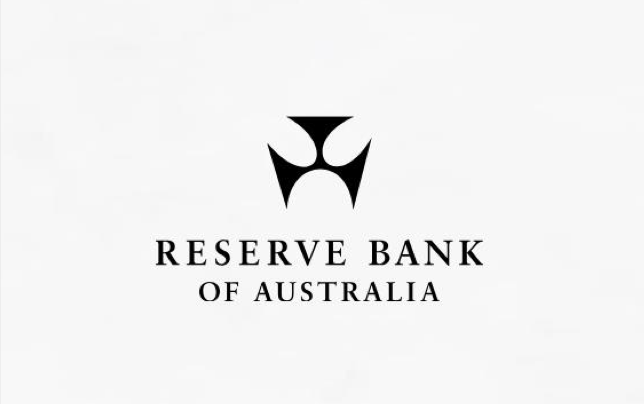
Understanding the FinTech Effect
By Elena Mesropyan for LTP
Investments in financial technology have grown exponentially in the past decade – rising from $1.8 billion in 2010 to $19 billion in 2015. The global investments in financial technology ventures in Q1 2016 were reported to reach $5.3 billion, representing a 67% increase over the same period last year. The percentage of investments that went to FinTech companies in Europe and Asia-Pacific nearly doubled to 62%. At such a scale, the financial technology industry cannot remain detached from national ecosystems and has a significant impact on trends, the flow of the funds among market participants and financial watchdogs’ attention.
Moreover, financial technology facilitates structural changes in the market, opening up opportunities for previously ‘invisible’ groups of population, strengthening the position of small businesses in the ecosystem, lifting people from poverty with technology and democratizing the financial services industry by boosting institutional efficiency.
While the regulatory side of the ecosystem is sometimes divided in opinions on the effect of FinTech on national and international markets, the Financial Stability Board (FSB), an international body that monitors and makes recommendations about the global financial system, has recently expressed an optimistic view on the FinTech effect.
On Thursday, Svein Andresen, Secretary General of FSB, noted that financial innovation enabled by the use of new technology is a driver of change in the financial system and its importance will inevitably increase. Hence, understanding these innovations is important for a full understanding of the structure and functioning of the financial system.
FSB identified three elemental promises common to a broad range of FinTech innovations, which we have been emphasizing before: 1) greater access to and convenience of financial services, 2) greater efficiency of financial services, and 3) a to push toward a more decentralized financial system, in which FinTech firms may be disintermediating traditional financial institutions.
And financial professionals agree with those elements. In his annual letter to shareholders, Jamie Dimon, Chairman and Chief Executive Officer of JPMorgan, paid special attention to the role of technology and FinTech in the banking business. As he noted:
“While many FinTech firms are good at utilizing new technologies, we should recognize that they are very good at analyzing and fixing business problems and improving the customer experience (i.e., reducing pain points). Sometimes they find a way to provide these services more efficiently and in a less costly manner; for example, cloud services. And sometimes these services are not less expensive but provide a faster and simplified experience that customers value and are willing to pay for. You see this in some FinTech lending and payment services.”
Moreover, Dimon emphasizes that it is unquestionable that FinTech will force financial institutions to move more quickly: services will be rolled out faster, and more of them will be executed on a mobile device. He also noted the inclusive role of financial technology, which makes financial services easier and often less expensive for customers, leading to many more people, including more lower-income people, joining the banking system around the world.
Not only does FinTech make financial services accessible for un/underbanked in developing countries and beyond, but also, financial technology – as we have mentioned before – improves small-businesses sustainability and chances for success as well as addresses common problems of large sets of population like students. A small business lender Credibly, for example, has funded over 6,000 small businesses with nearly $300 million in loans. CommonBond, a company that helps those with student loans refinance their debt, saves the average customer ~$14,000 – a sizable saving for students. Alibaba, for example, monitors and evaluates online transactions to identify commercial opportunities and then offers loans to small businesses through Alipay.
Financial technology also made a significant breakthrough in the state of international remittances. As cited by WEF, the fall in the cost of sending international payments over the last five years, driven by the entrance of new, cheaper alternatives, has already saved customers more than $60 billion since 2010.
Charlotte Petris, the Founder and CEO of Timelio, an Australian company that allows businesses to boost their cash flow by selling invoices online, earlier this year shared her insights on the far-reaching impact of FinTech, focusing on the Australian economy, in particular. As Petris cited, the FinTech sector is predicted to add $1 billion to the Australian economy by 2020 and grow at a compound annual growth rate of 76%.
“Increasing the awareness of new financing options for consumers and SMEs will help businesses across Australia take advantage of new opportunities for growth and create new jobs. Access to finance for businesses is proven to increase turnover, employment and profitability,” she added.
The Australian Government supports the idea, suggesting that by reducing information asymmetry in the marketplace. FinTech is not only improving the ability to match investors, lenders and borrowers, but also providing a more level playing field that allows retail investors to have greater participation in the market. FinTech intermediaries help bring additional liquidity to the market.
Moreover, alternative providers of financial services other than traditional institutions introduced a new way of communication and business conduct, based on complete transparency. And, as WEF professionals believe, with greater transparency comes greater freedom and greater choice.
According to WEF, in five years’ time, the sector will see increased competition and better alternatives. In 10 years’ time, it will have transformed and the balance of power within the relationship between the consumer and the providers of financial services will have fundamentally changed.
However, we cannot focus on exclusively positive expectations, as there is another side to the story. Some estimates predict that up to 30% of current employees in banks across Europe and the US may lose their jobs to technology by 2025. More precisely, ~1.8 million positions will go – mainly as a result of the automation of retail banking.
Kathleen Boyle, Managing Editor at Citi GPS, believes that advances in technology have changed customers’ relationships with banks. “Customers rely less and less on walking into a branch for their banking needs, and instead have digital options to help them – ATMs, online chat, mobile phones and internet banking,” she said. “As customers shift their behavior and move more towards digital solutions, banks will need to rethink their digital strategy.”
Conclusion
The Australian Government Treasury, probably, outlined the best some of the most important effects of financial technology companies and innovative technology overall on national and international ecosystem, listing the following economic benefits:
- FinTech unleashes a new era of competition, innovation and job-creating productivity in economies.
- FinTech is not just about monetizing data. It’s about how we can create and capture the value‑add from data, previously limited by previously available technology.
- Businesses and authorities receive structured access to almost unlimited data, which is not old‑style data mining but deep learning that permits previously unimagined insights and information that in turn allows more individualized products and services, and more efficient markets and systems.
- FinTech can offer solutions that are efficient and effective at lower scale, which will benefit small businesses and provide them with increased access to more diverse funding options. Innovative finance solutions can also significantly assist small businesses by providing them with better cash flow, improved working capital management and more stable or secure funding.
- FinTech is allowing people to conduct transactions through their mobile phone or tablets, improving efficiency and the customer experience.
- Innovative financial services such as robo‑advice have the potential to extend financial advice beyond HNWI and more sophisticated investors, to a wider cross‑section of the community.
- More digitized transactions support greater audit capability, transparency in payments systems and security in transactions by reducing risks you are also reducing the need for regulation.
- The transparent and real‑time operation of FinTech innovations, such as blockchain and digital currencies, are generating new value streams — not just in financial services but across the economy.
- FinTech can help drive improvements in traditional financial services and promote disruption through innovative new products and services, which can offer benefits to consumers and other sectors of the economy.
- FinTech is reducing information asymmetry in the marketplace and thereby, helping to mitigate risk and promote more efficient allocation of scarce resources.
First appeared at LTP




